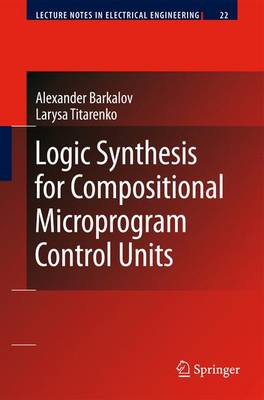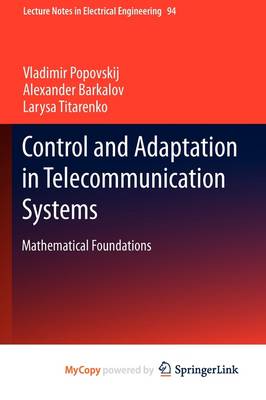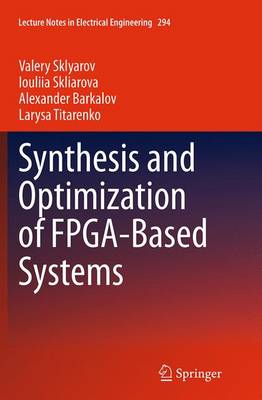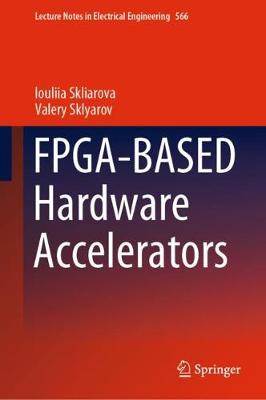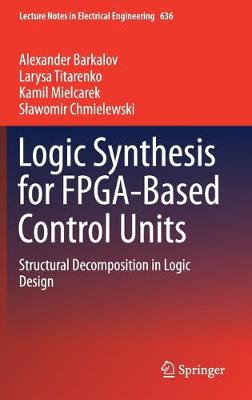Lecture Notes in Electrical Engineering
6 primary works
Book 22
Logic Synthesis for Compositional Microprogram Control Units
by Alexander Barkalov and Larysa Titarenko
Book 53
But application of all these achievements does not guaranteeper sedevelopmentof some competitiveelectronic product,- pecially in the acceptable time-to-market. This problem solution is possible only if a researcher possesses fundamental knowledge of a design process and knows exactly the mode of operation of industrial CAD tools in use. As it is known, any digital system can be represented as a composition of a da- path and a control unit.
Book 94
Control and Adaptation in Telecommunication Systems
by Vladimir Popovskij, Alexander Barkalov, and Larysa Titarenko
The book is devoted to mathematical foundations providing synthesis and analysis of control and adaptation algorithms targeting modern telecommunication systems (TCS). These algorithms are finding more and more applications in modern telecommunication technologies and they determine the efficiency of TCS. The concept of telecommunication management network is used as a base methodology. The most popular technologies and network management methods are discussed. They include such issues as Common Management Information Protocol, Remote Network Management Protocol Information Base, Simple Network Management Protocol, and Net Flow.
The methods of state variables are used as the main mathematic approaches for simulating control tasks. It allows solving the dynamic problems in the recursive style. The decomposition theorem is used for synthesis of control algorithms. Such issues as control algorithms for system observation and system state are discussed in details. The interpretation of applicability for discussed algorithms is given.
Some part of the book is devoted to methods of statistic gathering and suppressing of a priori uncertainty. They are reduced to constructing adaptive procedures and algorithms of self-organization and self-repairing for intellectual taught systems. The neural networks, multifunctional automata and Petri nets are discussed as examples. Also, tasks and problems of business processes management are shown in their connection with TCS.
Our book targets on students, PhD students and professionals in the area of telecommunications. We hope it will be useful for everybody connected with the new information technologies.
Book 294
Synthesis and Optimization of FPGA-Based Systems
by Valery Sklyarov, Iouliia Skliarova, Alexander Barkalov, and Larysa Titarenko
The book is composed of two parts. The first part introduces the concepts of the design of digital systems using contemporary field-programmable gate arrays (FPGAs). Various design techniques are discussed and illustrated by examples. The operation and effectiveness of these techniques is demonstrated through experiments that use relatively cheap prototyping boards that are widely available. The book begins with easily understandable introductory sections, continues with commonly used digital circuits, and then gradually extends to more advanced topics. The advanced topics include novel techniques where parallelism is applied extensively. These techniques involve not only core reconfigurable logical elements, but also use embedded blocks such as memories and digital signal processing slices and interactions with general-purpose and application-specific computing systems. Fully synthesizable specifications are provided in a hardware-description language (VHDL) and are ready to be tested and incorporated in engineering designs. A number of practical applications are discussed from areas such as data processing and vector-based computations (e.g. Hamming weight counters/comparators). The second part of the book covers the more theoretical aspects of finite state machine synthesis with the main objective of reducing basic FPGA resources, minimizing delays and achieving greater optimization of circuits and systems.
Book 566
This book suggests and describes a number of fast parallel circuits for data/vector processing using FPGA-based hardware accelerators. Three primary areas are covered: searching, sorting, and counting in combinational and iterative networks. These include the application of traditional structures that rely on comparators/swappers as well as alternative networks with a variety of core elements such as adders, logical gates, and look-up tables. The iterative technique discussed in the book enables the sequential reuse of relatively large combinational blocks that execute many parallel operations with small propagation delays. For each type of network discussed, the main focus is on the step-by-step development of the architectures proposed from initial concepts to synthesizable hardware description language specifications. Each type of network is taken through several stages, including modeling the desired functionality in software, the retrieval and automatic conversion of key functions, leading to specifications for optimized hardware modules. The resulting specifications are then synthesized, implemented, and tested in FPGAs using commercial design environments and prototyping boards. The methods proposed can be used in a range of data processing applications, including traditional sorting, the extraction of maximum and minimum subsets from large data sets, communication-time data processing, finding frequently occurring items in a set, and Hamming weight/distance counters/comparators. The book is intended to be a valuable support material for university and industrial engineering courses that involve FPGA-based circuit and system design.
Book 636
Logic Synthesis for FPGA-Based Control Units
by Alexander Barkalov, Larysa Titarenko, Kamil Mielcarek, and Slawomir Chmielewski
This book focuses on control units, which are a vital part of modern digital systems, and responsible for the efficiency of controlled systems. The model of a finite state machine (FSM) is often used to represent the behavior of a control unit. As a rule, control units have irregular structures that make it impossible to design their logic circuits using the standard library cells. Design methods depend strongly on such factors as the FSM used, specific features of the logic elements implemented in the FSM logic circuit, and the characteristics of the control algorithm to be interpreted.
This book discusses Moore and Mealy FSMs implemented with FPGA chips, including look-up table elements (LUT) and embedded memory blocks (EMB). It is crucial to minimize the number of LUTs and EMBs in an FSM logic circuit, as well as to make the interconnections between the logic elements more regular, and various methods of structural decompositions can be used to solve this problem. These methods are reduced to the presentation of an FSM circuit as a composition of different logic blocks, the majority of which implement systems of intermediate logic functions different (and much simpler) than input memory functions and FSM output functions. The structural decomposition results in multilevel FSM circuits having fewer logic elements than equivalent single-level circuits. The book describes well-known methods of structural decomposition and proposes new ones, examining their impact on the final amount of hardware in an FSM circuit. It is of interest to students and postgraduates in the area of Computer Science, as well as experts involved in designing digital systems with complex control units. The proposed models and design methods open new possibilities for creating logic circuits of control units with an optimal amount of hardware and regular interconnections.
